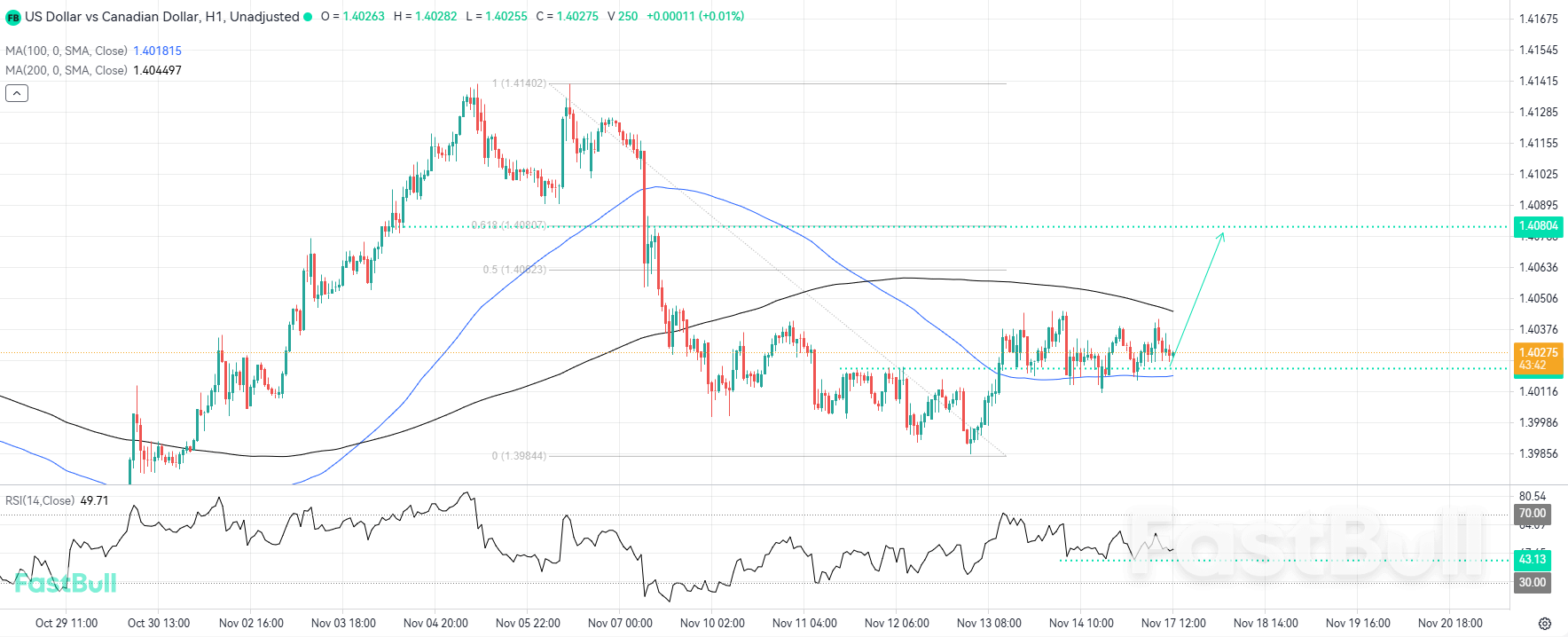Canadian headline inflation saw a modest reduction in October, as the Consumer Price Index (CPI) decreased to 2.2% year-over-year (YoY). This figure came in fractionally above the anticipated 2.1% but represented a decline from September’s 2.4%. On a month-over-month (MoM) basis, the CPI increased by 0.2%, which was precisely in line with expectations and slightly stronger than the 0.1% rise observed in September.
However, the Bank of Canada’s (BoC) preferred measure of underlying price pressure showed few signs of easing. The core CPI reading accelerated, increasing by 0.6% in October following a 0.2% rise in the prior month. The annual core rate also crept higher, ticking up to 2.9% from 2.8%. This data strongly suggests that underlying price pressure remains firmly entrenched even as headline inflation continues its gradual cooling trend.
In geopolitical news, President Donald Trump reversed tariffs on over 200 products, including items such as coffee, bananas, and orange juice. This decision was reportedly made in recognition of the inflationary impact caused by increased import costs, and it followed a series of political victories for Democratic candidates in local elections. The market’s reaction to this tariff news, however, proved to be marginal.
Meanwhile, the U.S. labor data calendar has been impacted by the recent government shutdown. The Bureau of Labor Statistics (BLS) announced on Friday that key delayed releases now have revised dates: the September Employment Situation report is rescheduled for November 20th, and September Real Earnings is set for November 21st, both at 13:30 GMT. U.S. Secretary of Labor Chavez-Deremer also cautioned that the agency was unable to fully collect the data necessary for the October CPI report, raising the possibility that this particular data release may be canceled entirely.
Federal Reserve Vice Chair Philip Jefferson delivered cautious yet slightly dovish remarks on Monday, highlighting the growing risks to employment and a gradual cooling in the labor market. His commentary stood in contrast to the more hawkish messaging from other Fed officials in the preceding week. Jefferson stated that policymakers must proceed with caution as interest rates approach the neutral level, and he warned that the extent of available government data before the next policy meeting remains unclear. Following last week’s hawkish commentary, which emphasized that inflation remains the central concern despite softer labor market signals, market expectations for a Fed rate cut have notably diminished. According to the CME FedWatch Tool, the probability of a rate cut in December has plummeted to approximately 44%, a sharp decline from the 94% probability recorded just one month prior.

Technical Analysis
The USDCAD currency pair has established a distinct consolidation phase situated just above the 100-period Moving Average (MA) on the 1-hour chart, which currently stands at 1.4018. The 200-period MA is positioned slightly above the current price action at 1.4044. The 100-period MA has been effectively acting as a strong bullish bounce zone. If this technical support level continues to hold, it could pave the way for a fresh upward impulse, potentially targeting the 1.4080 area. This specific level is crucial as it aligns closely with the 0.618 Fibonacci retracement, a level often sought out as a primary target following market corrections.
Adding conviction to the bullish outlook, the Relative Strength Index (RSI) has also found robust support at the 43 level, located just below the neutral midline. The indicator’s failure to enter deeply into oversold territory suggests that bullish control remains intact. Consequently, the path is clear for a new upward movement to initiate. However, traders should note that a decisive break below the 100-period MA would invalidate the current bullish structure and could open the door for a deeper bearish correction.
Trading Recommendations
Trading direction: Buy
Entry price: 1.4027
Target price: 1.4080
Stop loss: 1.3990
Validity: Nov 28, 2025 15:00:00













